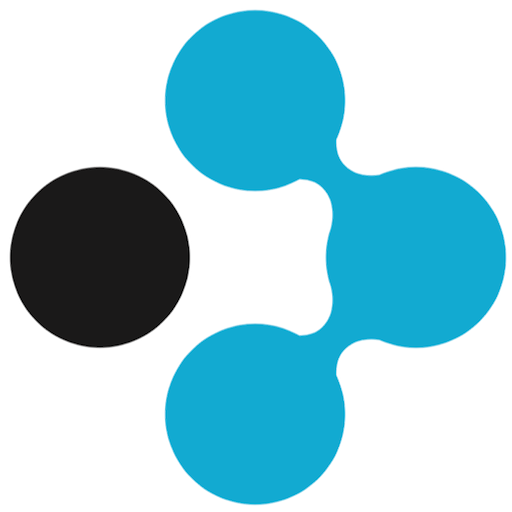Overview
Pathology – joint inflammation caused by deposits of monosodium urate (gout) or calcium pyrophosphate (pseudogout) crystals.
Presentation – sudden onset of pain, swelling, redness, heat and difficulty moving the joint.
Diagnosis – identification of crystals (on polarising light microscopy) in fluid or tophi samples taken from the joint.
Treatment – medication, lifestyle changes.
Where to refer – doctor or rheumatologist.
Disease Process
Gout:
Uric acid (monosodium urate) is a compound that is naturally produced and removed by the body. If the rate of production of uric acid exceeds the rate of removal, the concentration of uric acid in the blood can rise above desirable levels (hyperuricaemia). Uric acid normally remains dissolved in the blood stream but as the concentration of uric acid increases it becomes less soluble. Other factors, including temperature and pH (acidity or alkalinity of a watery solution) influence the solubility of uric acid and, under specific conditions, needle-shaped crystals can form in and around a joint, triggering an inflammatory response.
A simple analogy of the crystal formation process would be to imagine sugar in a cup of boiled water. Initially the sugar will dissolve in the fluid but as more is added it will no longer dissolve and the sugar will collect at the bottom of the cup. The sugar is less likely to dissolve if the water is cold, which may explain the why ‘colder’ joints such as the big toe are more susceptible to gout.
Pseudogout (CPPD Disease):
The term ‘pseudogout’ (pseudo = imitation) originates from descriptions of patients presenting with similar signs and symptoms of gout that did not respond to appropriate gout treatment. Recent developments in the understanding of pseudogout have led to the condition being more accurately referred to as calcium pyrophosphate deposition (CPPD) disease.
CPPD disease is not as well understood as gout but the two conditions are thought to share a similar process. The body regulates the levels of inorganic pyrophosphate but if excessive levels are present within a joint, calcium pyrophosphate crystals can form in the cartilage, triggering an inflammatory response and altering the mechanical properties of the cartilage.
Gout and CPPD disease are classified as crystal arthropathies (disease of a joint).
Risk Factors
Gout is more common in males, postmenopausal women and some ethnic groups (Taiwanese, Aboriginies, Māori and Pacific Islanders). CPPD disease is more common in patients with previous trauma to a joint, especially surgery to the meniscus of the knee.
Gout and CPPD disease are both more common in older age groups, with CPPD disease unlikely to be present in individuals under the age of 60. High consumption of purine-rich food or drink (e.g. offal, meat, certain seafood, sugar sweetened drinks, beer and spirits) have been associated with gout, as purines are broken down into uric acid by the body. There are no known dietary associations with CPPD disease, but individuals with excess iron due to haemochromatosis are also at higher risk of CPPD disease.
Presentation
The clinical presentation of individuals with gout or CPPD disease is often indistinguishable, as the inflammatory response and associated signs/symptoms of inflammation (pain, swelling, heat, redness and difficulty moving the joint) are the same for both conditions. However, there are patterns that may help clinicians differentially diagnose.
In the first episode of gout, signs and symptoms typically present in one joint only (monoarthritis), peak within 24 hours and resolve completely within 1-2 weeks of onset. The big toe is the most commonly affected joint but subsequent episodes can involve multiple joints (polyarthritis) including the knee (image 1), may occur more frequently and take longer to settle. In long standing cases (chronic gouty arthritis), the affected joint may become structurally damaged and small ‘chalk-like’ lumps (tophi) can develop beneath the skin.
Images 1-2: side view of knee gout and aspiration of joint fluid for analysis.


CPPD disease typically presents in one joint or 2-4 joints at the same time (oligoarthritis), but signs and symptoms may last for weeks or months. The knee is the most commonly affected joint, followed by the wrist, but the big toe is unlikely to be affected.
Diagnosis
Definitive diagnosis of gout and CPPD disease requires the identification of crystals in samples of fluid (or tophi) taken from the affected joint. Fluid is withdrawn from the affected joint via a needle (joint aspiration) (image 2) and analysed with polarising light microscopy to confirm the presence of monosodium urate (gout) or calcium pyrophosphate crystals (CPPD disease). These samples should be analysed immediately at room temperature as formation and solubility of crystals are affected by temperature and pH. The sample should also be assessed for the presence of bacteria by performing gram stain and culture as gout, CPPD disease and joint infection can present with similar signs/symptoms and the conditions can co-exist.
If it is not possible to assess fluid or tophi samples, other tests may be performed to determine the likelihood of gout. Blood tests can measure the concentration of uric acid in the blood (serum urate), inflammatory markers (e.g. C-reactive protein) and markers of infection (full blood count). It is important to note that these tests cannot be used to definitively diagnose gout as some patients will have elevated serum urate levels but do not develop symptoms, while one third of patients will have normal serum urate levels during a confirmed flare up. However, gout is unlikely in an individual with a serum urate level persistently below 360μmol/L (6.05mg/dL), as crystals do not usually form below this level.
Serum urate levels can be combined with other clinical signs/symptoms to determine the probability of gout by using the gout calculator; points are awarded if the criteria below are present.
| Criteria | Points |
|---|---|
| Urate > 349.8 mol/L (5.88mg/dL) | 3.5 |
| 1st MTP (big toe) involvement | 2.5 |
| Male Gender | 2 |
| Previous reported arthritis | 2 |
| High BP or ≥ 1 cardiovascular disease | 1.5 |
| Joint redness | 1 |
| Onset symptoms within 1 day | 0.5 |
| Maximum total | 13 |
| Probability of gout |
|---|
| < 4 LOW |
| 4-8 INTERMEDIATE |
| >8 HIGH |
One study found the gout calculator to be useful in differentiating gout from septic arthritis, but septic arthritis was present in all groups and therefore cannot be dismissed based on the score.
Elevated temperature (fever), C-Reactive protein and white blood cell levels may indicate infection, but in acute flare ups of gout or CPPD disease, these levels may also be raised, especially when multiple joints are involved.
Imaging
X-rays may be normal in early stages of gout but bone erosion may be evident in advanced stages. Chondrocalcinosis (calcium deposits in the cartilage) may be visible on X-ray in CPPD disease, but X-ray will not identify all patients with CPPD disease and chondrocalcinosis can also be caused by other conditions (e.g. knee osteoarthritis, rheumatoid arthritis).
Image 4: X-ray evidence of chondrocalcinosis (white arrow).
Ultrasound and CT scans have more recently been utilised to identify urate deposition and chondrocalcinosis, and therefore aid the diagnosis of crystal arthropathy. For details on the diagnostic accuracy of ultrasound and dual energy computed tomography (DECT) for gout, please visit the statistics section.
Treatment
Acute flare-ups of gout and pseudogout should be managed with medication (e.g. non-steroidal anti-inflammatories (NSAIDs), corticosteroid or colchicine), as prescribed by a qualified health care professional. There is no evidence to suggest that either oral NSAIDs or corticosteroid injections are superior for pain relief during acute flare-ups of gout but corticosteroids appear to be safer.
Strategies that achieve crystal dissolution are central to the effective management of gout. Urate lowering medication (e.g. Allopurinol, Feboxustat) may be prescribed by a qualified health care professional, with a target serum urate level of <360umol/L. Lifestyle changes are also recommended as alcohol consumption, poor diet and obesity have been associated with a poor response to urate lowering medication.
Unlike gout, disease modifying medication are not currently available for CPPD disease. Repeated corticosteroid injections into the knee may control symptoms, while daily use of colchicine may reduce the frequency of acute flare-ups. Other medication may be trialled for the management of long-standing CPPD disease; the potential risks and benefits of different medications should be discussed with the individual’s health care provider.
In advanced cases, knee joint replacement may be indicated for individuals with symptomatic gout or CPPD disease that is not responding appropriately to conservative treatment.
Recovery
In the first episode of gout, signs and symptoms typically peak within 24 hours and resolve completely within 1-2 weeks of onset. In subsequent episodes, signs and symptoms may occur more frequently and take longer to settle. CPPD disease symptoms may last for weeks or months. In long standing cases, individuals may not respond to appropriate treatment and knee joint replacement may be required.
Signposting
Individuals presenting with a first episode of sudden onset (within 24 hours) heat, swelling and pain in the knee, with no history of injury, should attend Accident and Emergency immediately to exclude an infection in the joint (septic arthritis).
Patients that have had a previous episode of similar symptoms, which was diagnosed as inflammatory arthritis, may have a flare up and can contact their GP or rheumatologist immediately. However, a previous diagnosis of inflammatory arthritis does not exclude the possibility of joint infection; therefore, the patient should attend Accident and Emergency immediately if there is any doubt as a delay in diagnosis can have serious consequences.
Acknowledgements
Written by: Richard Norris, The Knee Resource.
Reviewed by: Paul Kirwan, HRB Clinical Research Fellow, Royal College of Surgeons Ireland, Physiotherapist Connolly Hospital, Private Physiotherapist.

References
Billy CA, Lim RT, Ruospo M, Palmer SC, Strippoli GFM. Corticosteroid or Nonsteroidal Antiinflammatory Drugs for the Treatment of Acute Gout: A Systematic Review of Randomized Controlled Trials. J Rheumatol. 2017.
Dalbeth N, Merriman TR, Stamp LK. Gout. Lancet. 2016;388(10055):2039-52.
Janssens HJ, Fransen J, van de Lisdonk EH, van Riel PL, van Weel C, Janssen M. A diagnostic rule for acute gouty arthritis in primary care without joint fluid analysis. Arch Intern Med. 2010;170(13):1120-6.
Kienhorst LB, Janssens HJ, Fransen J, Janssen M. The validation of a diagnostic rule for gout without joint fluid analysis: a prospective study. Rheumatology (Oxford). 2015;54(4):609-14.
Lee KH, Choi ST, Lee SK, Lee JH, Yoon BY. Application of a Novel Diagnostic Rule in the Differential Diagnosis between Acute Gouty Arthritis and Septic Arthritis. J Korean Med Sci. 2015;30(6):700-4.
Lee YH, Song GG. Diagnostic accuracy of dual-energy computed tomography in patients with gout: A meta-analysis. Semin Arthritis Rheum. 2017;47(1):95-101.
Richette P, Bardin T. Gout. Lancet. 2010;375(9711):318-28.
Rosenthal AK, Ryan LM. Calcium Pyrophosphate Deposition Disease. N Engl J Med. 2016;374(26):2575-84.
Wechalekar MD, Vinik O, Moi JH, Sivera F, van Echteld IA, van Durme C, et al. The efficacy and safety of treatments for acute gout: results from a series of systematic literature reviews including Cochrane reviews on intraarticular glucocorticoids, colchicine, nonsteroidal antiinflammatory drugs, and interleukin-1 inhibitors. J Rheumatol Suppl. 2014;92:15-25.

